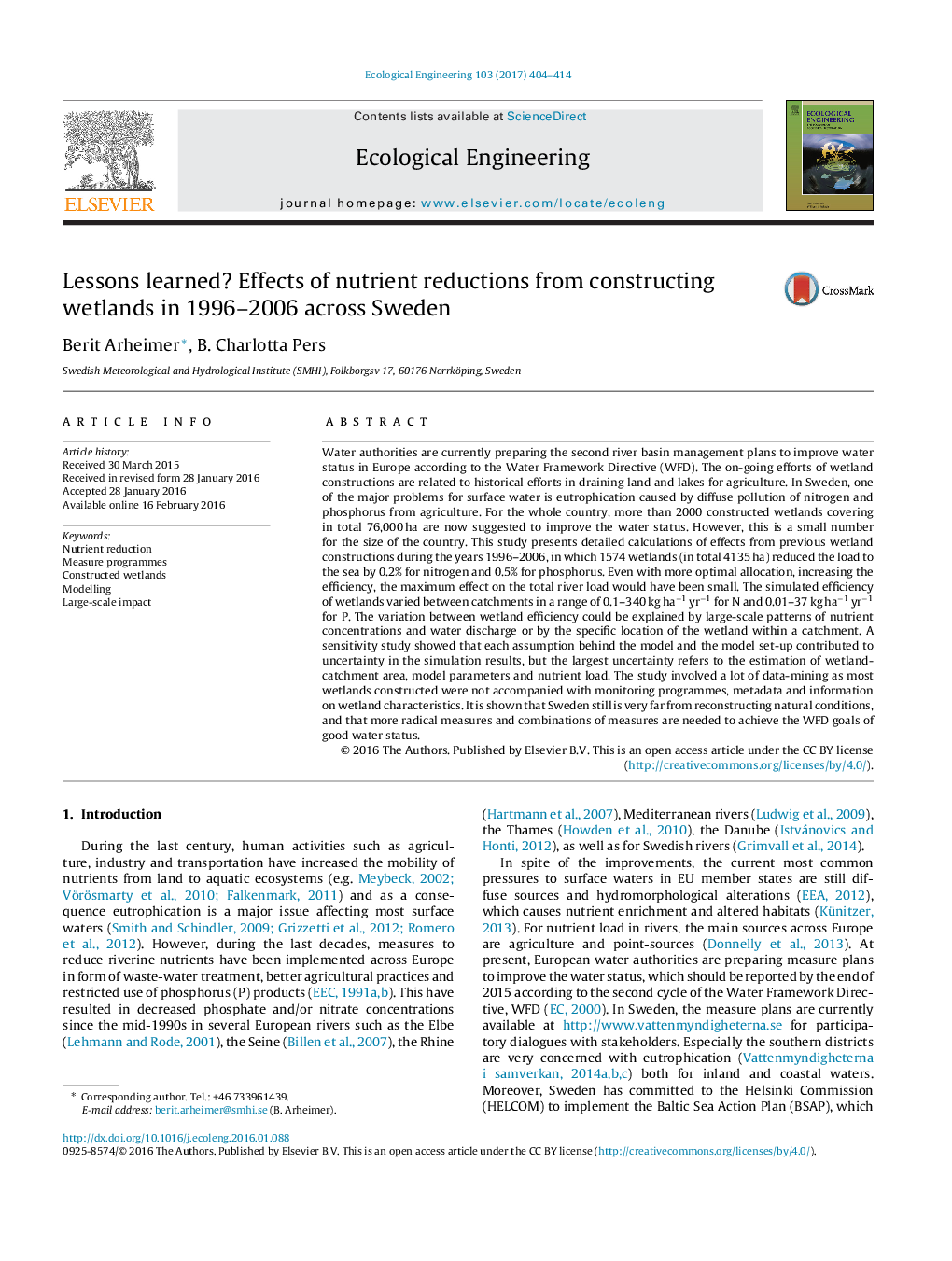| Article ID | Journal | Published Year | Pages | File Type |
|---|---|---|---|---|
| 5743895 | Ecological Engineering | 2017 | 11 Pages |
â¢Effects of thousands of constructed wetlands.â¢Small effect on large-scale nutrient load.â¢Sweden has failed to allocate wetlands effectively.
Water authorities are currently preparing the second river basin management plans to improve water status in Europe according to the Water Framework Directive (WFD). The on-going efforts of wetland constructions are related to historical efforts in draining land and lakes for agriculture. In Sweden, one of the major problems for surface water is eutrophication caused by diffuse pollution of nitrogen and phosphorus from agriculture. For the whole country, more than 2000 constructed wetlands covering in total 76,000 ha are now suggested to improve the water status. However, this is a small number for the size of the country. This study presents detailed calculations of effects from previous wetland constructions during the years 1996-2006, in which 1574 wetlands (in total 4135 ha) reduced the load to the sea by 0.2% for nitrogen and 0.5% for phosphorus. Even with more optimal allocation, increasing the efficiency, the maximum effect on the total river load would have been small. The simulated efficiency of wetlands varied between catchments in a range of 0.1-340 kg haâ1 yrâ1 for N and 0.01-37 kg haâ1 yrâ1 for P. The variation between wetland efficiency could be explained by large-scale patterns of nutrient concentrations and water discharge or by the specific location of the wetland within a catchment. A sensitivity study showed that each assumption behind the model and the model set-up contributed to uncertainty in the simulation results, but the largest uncertainty refers to the estimation of wetland-catchment area, model parameters and nutrient load. The study involved a lot of data-mining as most wetlands constructed were not accompanied with monitoring programmes, metadata and information on wetland characteristics. It is shown that Sweden still is very far from reconstructing natural conditions, and that more radical measures and combinations of measures are needed to achieve the WFD goals of good water status.
Graphical abstractDownload high-res image (226KB)Download full-size image
